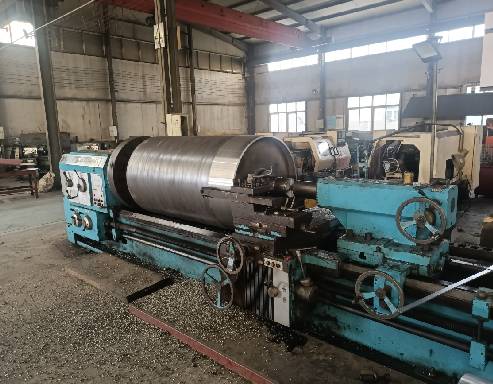 Afrikaans
Afrikaans  Albanian
Albanian  Amharic
Amharic  Arabic
Arabic  Armenian
Armenian  Azerbaijani
Azerbaijani  Basque
Basque  Belarusian
Belarusian  Bengali
Bengali  Bosnian
Bosnian  Bulgarian
Bulgarian  Catalan
Catalan  Cebuano
Cebuano  Corsican
Corsican  Croatian
Croatian  Czech
Czech  Danish
Danish  Dutch
Dutch  English
English  Esperanto
Esperanto  Estonian
Estonian  Finnish
Finnish  French
French  Frisian
Frisian  Galician
Galician  Georgian
Georgian  German
German  Greek
Greek  Gujarati
Gujarati  Haitian Creole
Haitian Creole  hausa
hausa  hawaiian
hawaiian  Hebrew
Hebrew  Hindi
Hindi  Miao
Miao  Hungarian
Hungarian  Icelandic
Icelandic  igbo
igbo  Indonesian
Indonesian  irish
irish  Italian
Italian  Japanese
Japanese  Javanese
Javanese  Kannada
Kannada  kazakh
kazakh  Khmer
Khmer  Rwandese
Rwandese  Korean
Korean  Kurdish
Kurdish  Kyrgyz
Kyrgyz  Lao
Lao  Latin
Latin  Latvian
Latvian  Lithuanian
Lithuanian  Luxembourgish
Luxembourgish  Macedonian
Macedonian  Malgashi
Malgashi  Malay
Malay  Malayalam
Malayalam  Maltese
Maltese  Maori
Maori  Marathi
Marathi  Mongolian
Mongolian  Myanmar
Myanmar  Nepali
Nepali  Norwegian
Norwegian  Norwegian
Norwegian  Occitan
Occitan  Pashto
Pashto  Persian
Persian  Polish
Polish  Portuguese
Portuguese  Punjabi
Punjabi  Romanian
Romanian  Russian
Russian  Samoan
Samoan  Scottish Gaelic
Scottish Gaelic  Serbian
Serbian  Sesotho
Sesotho  Shona
Shona  Sindhi
Sindhi  Sinhala
Sinhala  Slovak
Slovak  Slovenian
Slovenian  Somali
Somali  Spanish
Spanish  Sundanese
Sundanese  Swahili
Swahili  Swedish
Swedish  Tagalog
Tagalog  Tajik
Tajik  Tamil
Tamil  Tatar
Tatar  Telugu
Telugu  Thai
Thai  Turkish
Turkish  Turkmen
Turkmen  Ukrainian
Ukrainian  Urdu
Urdu  Uighur
Uighur  Uzbek
Uzbek  Vietnamese
Vietnamese  Welsh
Welsh  Bantu
Bantu  Yiddish
Yiddish  Yoruba
Yoruba  Zulu
Zulu Optimizing Conveyor Systems with Enhanced Impact Bed Technology for Improved Performance
The Importance of Conveyor Impact Beds in Material Handling Systems
In the realm of material handling, efficiency and safety are of paramount importance. One critical component that plays a significant role in ensuring both is the conveyor impact bed. These specialized beds are designed to protect conveyor systems from heavy falling materials, thereby preventing damage, reducing maintenance costs, and increasing overall productivity.
Conveyor systems are employed in various industries, from mining and agriculture to manufacturing and distribution. The handling of bulk materials often involves significant drops from one part of the operation to another. When materials are transported on conveyor belts, especially in loading and unloading areas, they can fall from heights, resulting in substantial impacts. This is where conveyor impact beds come into play.
An impact bed is essentially a support system designed to absorb the shock generated during the drop of materials onto the conveyor. Typically made from high-quality plastic, rubber, or composite materials, these beds feature a series of impact-absorbing elements that cushion the blow, distributing the energy evenly across the surface. This not only protects the conveyor belt but also minimizes the wear and tear on other components like pulleys, bearings, and gears.
One of the primary benefits of using conveyor impact beds is the extended life of the conveyor system. By reducing the impact forces, these beds can significantly lower the risk of damage to conveyor belts, which are often one of the most expensive components to replace. This translates to less downtime for maintenance and repairs, allowing for smoother operations and enhanced productivity.
conveyor impact bed

Moreover, conveyor impact beds contribute to improved safety in the workplace. A conveyor system with proper impact management reduces the risk of spillage, which can create hazards for workers. Loose materials can lead to slips, trips, and falls, which are among the most common accidents in industrial settings. By minimizing material spillage and securing the load, impact beds uphold a safer working environment.
Additionally, modern conveyor impact beds are designed with versatility in mind. They can be customized to fit various conveyor designs and specific material types, ensuring optimal performance across different applications. Features such as adjustable height, various hardness levels, and specialized configurations allow companies to tailor their impact beds according to their needs.
Beyond functionality, the economic implications of conveyor impact beds cannot be overlooked. The initial investment in quality impact beds is often offset by the savings in repair costs, reduced material waste, and enhanced productivity. Companies that prioritize the integration of effective impact management systems within their operations often see a significant return on investment.
In conclusion, conveyor impact beds are an indispensable component of modern material handling systems. They provide essential protection against the physical stresses incurred during material transport, promote a safer working environment, and contribute to the longevity and efficiency of conveyor systems. As industries continue to evolve and demand more robust solutions, the role of conveyor impact beds will only grow in importance. Investing in these systems is not just a matter of compliance or operational efficiency; it's a strategic decision that can enhance safety, productivity, and the bottom line. Whether you're in mining, manufacturing, or distribution, evaluating the design and implementation of your conveyor impact beds could be a key step towards optimizing your material handling operations.
-
Revolutionizing Conveyor Reliability with Advanced Rubber Lagging PulleysNewsJul.22,2025
-
Powering Precision and Durability with Expert Manufacturers of Conveyor ComponentsNewsJul.22,2025
-
Optimizing Conveyor Systems with Advanced Conveyor AccessoriesNewsJul.22,2025
-
Maximize Conveyor Efficiency with Quality Conveyor Idler PulleysNewsJul.22,2025
-
Future-Proof Your Conveyor System with High-Performance Polyurethane RollerNewsJul.22,2025
-
Driving Efficiency Forward with Quality Idlers and RollersNewsJul.22,2025





























